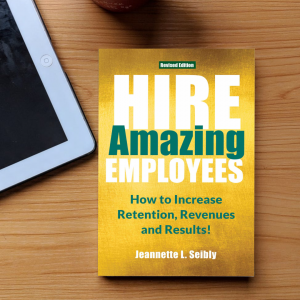
Working with an incompetent boss is challenging. They can sabotage your efforts while wasting time and money—for you, your team, and the company. This can happen whether you’re working with your direct boss, your boss’s boss, or a boss you don’t report to directly.
Many times, the boss’s incompetence stems from a lack of self-awareness and a failure to understand their impact on others. They often insist everything is done their way—even when their way doesn’t work. The primary reason they are incompetent is they never learned how to work with a team. And they are often resentful when you know a better way to get results and voice them.
The challenge intensifies when the boss is well-liked or has a strong reputation. So—it’s up to you to learn how to work with them because they don’t have to learn to work well with you!
Even though it might be easier for you to take over the boss’s role to get the job done … be careful … their popularity and ego can hurt you and your future career opportunities if not handled with diplomacy.
5 Tips to Work Well with an Incompetent Boss and Keep Your Job
Diplomacy. This is the #1 skill to develop and use rigorously. Being right, egotistical, or gossiping about the boss’s incompetence will not get the job done. And, if you complain, it will come back to bite you.
Instead:
- Be an ally. (Even if that seems impossible.)
- Take the boss to lunch to build rapport outside the pressure of the project.
- Ask non-threatening questions about their background and experience.
- Ask how the project is coming along.
- Offer to do one task the boss is complaining about “to help the person out.” Get it done ASAP.
- Then ask, “How else can I help you?”
Do It Their Way. The biggest fear most incompetent bosses have is that others won’t do it their way. It’s true—you and others won’t. But to gain their trust:
- Do it their way the first time.
- Then offer only one suggestion on how it could be done faster or better in the future (e.g., use a dashboard to track progress).
- Again, only offer one suggestion at a time—then allow it to be their idea!
Bring in a Respected 3rd Party. You may not have the luxury of waiting for the incompetent boss to “get it.” Talk with your company mentor, boss, or external company coach (if available) about how to best handle the issue. However, the right person (not you) should work with the “incompetent boss” and use a qualified job fit assessment focused on leadership attributes that can make a positive difference.
- Stick with the facts when talking with 3rd
- Understand others may be unwilling to “rock the boat” since it could negatively impact them.
An aspiring young leader, Stephanie, volunteered to work with Tyler, an executive known for being difficult and blaming others. Stephanie asked her coach for guidance. Armed with insights, she asked Tyler if she could shadow him for a day and learn about his background and job. He was flattered. Over time, they built a good working relationship. When Tyler poorly managed a customer project, Stephanie was able to step up. She relied on their rapport to have a frank but diplomatic conversation. Tyler allowed Stephanie to help him and turn around the results.
This type of diplomacy and curiosity can build trust—even with difficult leaders.
Document. Be proactive:
- Ask at least twice: “How can I help?” or “What would you like me to do?”
- Document if you did not get an answer or received push-back.
- Keep it fact-based—stay away from blame.
- Share your brags with your boss to keep them apprised, especially since it can show up on your performance appraisal.
When All Else Fails, Let It Go. If you’re deeply committed to doing good work, this will be difficult. You probably have a strong emotional attachment to fulfilling the needs of the project. But when an incompetent boss refuses to budge, you must step back—especially if no one is willing to help facilitate the outcome. If you don’t, you risk developing a bad reputation for “not working well with others.” Ironic, isn’t it?
Working with an incompetent boss is common but does not need to negatively impact your job or career. Many times, the experience elevates your skills and it is positively noticed!
© Jeannette Seibly 2021–2025 All Rights Reserved
 Jeannette Seibly, an award-winning Talent Advisor, Leadership Results Coach, and Business Author, has guided thousands of executives and business leaders to achieve remarkable success over the past 33 years. Her specialty is delivering innovative solutions for hiring, coaching, and leadership challenges—with excellence and accountability at the core. How can I help you navigate the ups and downs of working with a difficult boss?
Jeannette Seibly, an award-winning Talent Advisor, Leadership Results Coach, and Business Author, has guided thousands of executives and business leaders to achieve remarkable success over the past 33 years. Her specialty is delivering innovative solutions for hiring, coaching, and leadership challenges—with excellence and accountability at the core. How can I help you navigate the ups and downs of working with a difficult boss?


 Jeannette Seibly, an award-winning Talent Advisor, Leadership Results Coach, and Business Author, has guided thousands of executives and business leaders to achieve remarkable success over the past 33 years. Her specialty is delivering innovative solutions for hiring, coaching, and leadership challenges—with excellence and accountability at the core.
Jeannette Seibly, an award-winning Talent Advisor, Leadership Results Coach, and Business Author, has guided thousands of executives and business leaders to achieve remarkable success over the past 33 years. Her specialty is delivering innovative solutions for hiring, coaching, and leadership challenges—with excellence and accountability at the core. Remember, use a
Remember, use a 
 Jeannette Seibly, an award-winning Talent Advisor, Leadership Results Coach, and Business Author, has guided thousands of executives and business leaders to achieve remarkable success over the past 33 years. Her specialty is delivering innovative solutions for hiring, coaching, and leadership challenges—with excellence and accountability at the core.
Jeannette Seibly, an award-winning Talent Advisor, Leadership Results Coach, and Business Author, has guided thousands of executives and business leaders to achieve remarkable success over the past 33 years. Her specialty is delivering innovative solutions for hiring, coaching, and leadership challenges—with excellence and accountability at the core.


 For those navigating the 55+ transition, goals aren’t just about productivity—they’re about rediscovery. Whether you’re refining your career path, relocating, or reimagining what fulfillment looks like, the right goal can act as a compass—guiding you toward clarity, confidence, and meaningful impact.
For those navigating the 55+ transition, goals aren’t just about productivity—they’re about rediscovery. Whether you’re refining your career path, relocating, or reimagining what fulfillment looks like, the right goal can act as a compass—guiding you toward clarity, confidence, and meaningful impact. 
 Empower with Confidence: Host the workshop: “Get Your Brag On!” to help your team articulate their value, align personal strengths with business goals, and boost morale. Several of my clients have hosted these brag sessions quarterly — these offered clarity, acknowledged contribution, and built confidence in times of change. When employees know how to articulate their value, they’re more likely to stay engaged during the process of change.
Empower with Confidence: Host the workshop: “Get Your Brag On!” to help your team articulate their value, align personal strengths with business goals, and boost morale. Several of my clients have hosted these brag sessions quarterly — these offered clarity, acknowledged contribution, and built confidence in times of change. When employees know how to articulate their value, they’re more likely to stay engaged during the process of change. 

